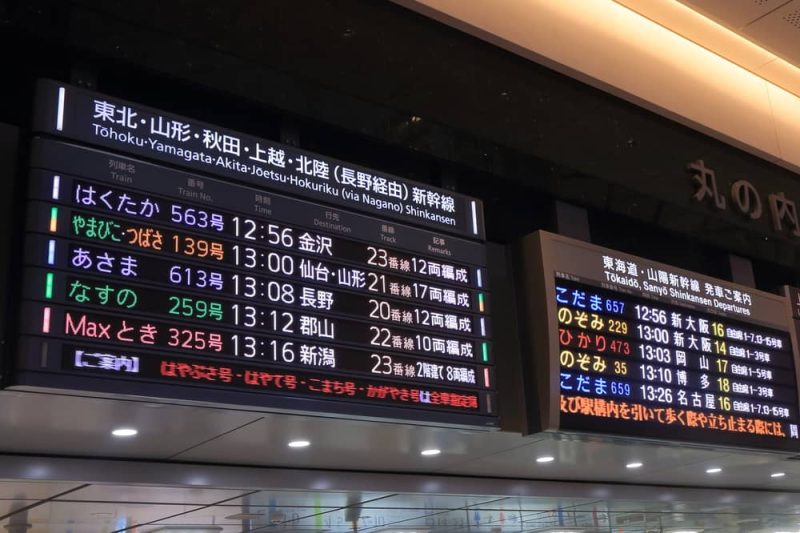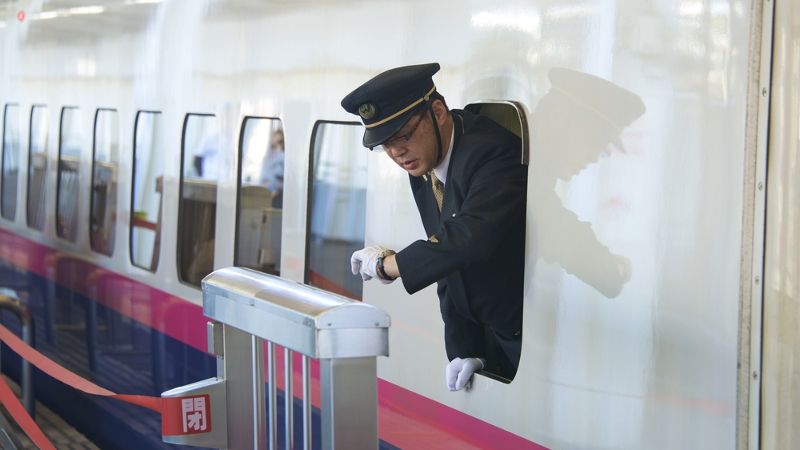Traveling by train is more prevalent in Japan than in most other countries around the world. Statistics from the OECD showed that in 2021, 28% of passenger kilometers in Japan were traveled by rail, compared to just 0.25% in the United States and 5% in the United Kingdom.
A large part of this frequent use is due to the excellence of their railway system—particularly evident in the iconic Shinkansen or bullet train—which puts many others to shame.
From the unparalleled speed to its impressive safety record and the comfort it offers, to the JR Pass that gives you unlimited access to transportation all around Japan, the Japanese rail system is a marvel of modern transportation. However, the standout feature that truly sets it apart is its punctuality.
Table of Contents
How they compare to other countries
In 2024 the Japanese Tokaido Shinkansen, which runs from Tokyo to Osaka, had an average delay time of just 1.6 minutes per every train in service. And this dedication to punctuality is typical across Japan’s rail network. The online database Statista has even designated the Japanese train system as the world frontrunner for reliability with a score of 6.8 out of 7.
In comparison, statistics for railway systems in other countries show they often struggle with timeliness. For instance, only 62.5 % of long-distance trains operated by the German Deutsche Bahn were on time in 2024.
This includes the high-speed Intercity Express (ICE) train, which, despite Germany’s reputation for efficiency, was only on time 64.6% of the time on February 10, 2025.
Things are worse in the UK, with just 67.7 % of Network Rail trains running on time in the last quarter of 2024. What’s more, only a staggering 2% of trains running between London and Manchester departed and arrived on time.
Meanwhile, Amtrak, the national passenger railroad company of the United States, reported that only around 75% of Amtrak trains were punctual in 2023, with over 50,000 hours of delay caused by the host railroad.
When compared to other countries, the efficiency of the Japanese railway system truly stands head and shoulders above the rest.
Why Japanese trains are always on time
The commitment to punctuality in Japan’s railways is both deeply embedded in the culture and facilitated by cutting-edge technology. There are also several other factors that contribute to the impressive punctuality of Japanese trains.
Precise scheduling

Train schedules in Japan are planned down to the second. This meticulous design ensures that each train not only arrives and departs on time but also maintains an optimal frequency, even in densely populated urban areas.
A departure is deemed on-time if it occurs within 15 seconds of the scheduled time—neither earlier nor later than 15 seconds. Additionally, most trains arrive within 6 seconds of their appointed time.
Furthermore, buffer times are integrated into schedules, allowing for adjustments without disrupting the flow.
Advanced technology
Japanese trains take advantage of the latest technologies to maintain and enhance their punctuality:
- Automatic Train Control (ATC): This technology regulates train speeds and ensures safe distances between trains, significantly aiding in adherence to schedules.
- Autonomous Decentralized Transport Operation Control System (ATOS): A central control room monitors every train’s position and status, making real-time adjustments to ensure timely operations.
- Computerized Safety, Maintenance, and Operation Systems of Shinkansen (COSMOS): Manages all aspects of Shinkansen operations comprehensively, encompassing the scheduling of train timetables, train traffic management, and the oversight, control, and maintenance of equipment.
Efficient boarding and alighting
The efficiency of boarding and alighting in Japan is unmatched. Platforms have clear markings indicating where doors will open, complemented by the clear distinction between car classes, such as standard and Green Cars.
Additionally, train staff facilitate rapid boarding and alighting, ensuring trains spend minimal time at stations.
Frequent maintenance
One of the keys to the punctuality of Japanese trains is the frequent and meticulous maintenance of both trains and tracks. This proactive approach ensures that all components of the railway system function optimally, reducing the likelihood of faults that could lead to delays.
A striking example of the efficiency in the Japanese rail system is the famed “Seven-Minute Miracle.” This term refers to the rapid cleaning process performed on the Shinkansen trains.
Despite the quick turnaround time, the cleaning crews manage to thoroughly clean and prepare each train for its next journey in just 7 minutes. This process includes removing trash, wiping down tray tables and windows, and properly arranging the seats.
This cleaning feat is not only a testament to the efficiency and dedication of the cleaning staff but also plays a critical role in maintaining the train schedules. By ensuring that trains are ready to depart again in such a short period, the Shinkansen maximizes its operational efficiency without compromising the quality of service.
Highly trained staff
Staff undergo extensive training to operate under precise and demanding conditions. This training covers everything from daily operations to emergency responses, ensuring that any potential disruptions are handled swiftly and efficiently.
One notable practice integral to their training is the shisa kanko (pointing-and-calling) system. This technique involves workers physically pointing at and verbally calling out the status of operational checks as they conduct them.

This method helps in reducing errors by engaging multiple senses, which increases awareness and helps in memorizing tasks. It’s used by train operators, conductors, and other staff to ensure that every operational detail is checked and double-checked.
It serves not only to maintain high levels of safety but also contributes significantly to the punctuality for which Japanese trains are renowned. Staff using this method are less likely to overlook potential issues, ensuring that trains run smoothly and on time.
Cultural values
Punctuality is a cornerstone of Japanese culture and is a prominent feature that extends to every facet of life, including public transportation.
The cultural ethos in Japan is heavily influenced by a collective focus, where individuals are expected to contribute to the well-being of the group. This societal structure fosters a sense of collective responsibility, encouraging people to work together harmoniously to maintain schedules and minimize disruptions.
The cultural emphasis on apology and responsibility is evident when train companies issue official delay certificates for even slight delays, as little as 5 minutes. These certificates serve as an official explanation for lateness to employers or schools, which is a testament to the high value placed on punctuality in Japanese society.
Etiquette and courtesy are also paramount on Japanese public transportation. This is observed in the orderly queuing and silent or subdued behavior on trains, reflecting a deep respect for other passengers’ space and experience. By following train etiquette, both passengers and staff contribute to maintaining the timeliness of services
Contingency plans for delays
On the rare occasions when delays occur, passengers are immediately informed, and alternative arrangements are swiftly organized. The issuance of delay certificates for minor delays exemplifies the high standards maintained by Japanese rail services.
Separation of freight and passenger lines
Japan distinguishes between freight and passenger rail lines, which helps avoid delays caused by slower-moving freight trains on passenger tracks.
Weather preparedness
Japanese rail systems are well-equipped to handle various weather conditions, including typhoons and heavy snowfalls. For example, Shinkansen have specialized equipment like snowplows and track heating systems in colder regions.
Continuous improvement
Japanese rail companies continually analyze performance data to identify and mitigate potential causes of delays, constantly striving for even greater punctuality on Shinkansen trains.
Shinkansen: Redefining rail efficiency
While no system is perfect, the overall rate of efficiency and punctuality of Japanese trains set a global benchmark, particularly the Shinkansen rail system.
The combination of advanced technology, meticulous planning, and cultural dedication to punctuality ensures that the Japanese rail system remains a sterling example of transportation excellence.
Travelers seeking a reliable and efficient way to explore Japan need look no further than its exceptional rail system, accessible with the convenient JR Pass.
Sources:
